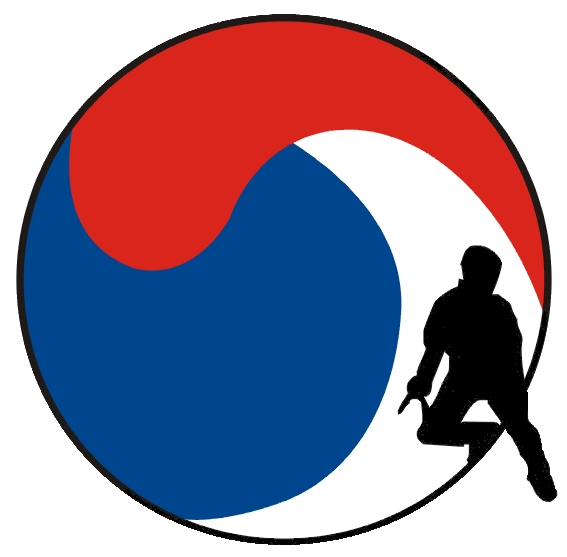A Climb In Korea
Written by Peter Jensen-Choi
04-23-2010
The snow had been falling for the past few hours on our climb up to the top of InsuBong, an enormous monolith of granite that towers into the sky above the hills and trees of Bukhansan National Park, not too far from the northwestern reaches of downtown Seoul. Prior to the Japanese Colonial period, Bukhansan National Park was formerly known as SamGakSan or “Triangle Mountain,” named for the three prominent peaks viewed from the east– ManGyeongDae, BaekEunDae and InsuBong– and also named for the three prominent peaks viewed from the west– NoJeokBong, BaekEunDae and InsuBong. I had encouraged our team to continue on about halfway up the modest GoDokGil route just as the snow had begun to fall. It was still warm and the snow was falling ever so lightly as we climbed. Confident, we continued on.
It was late autumn and my clients had come out every Sunday for the past five weeks with the promise of reaching the top of InsuBong. They were complete beginners, but each week we had learned a new set of skills to prepare them for this climb. By the fourth Sunday out, they had all learned proper belaying, multi-pitch management, and basic abseiling techniques, just to mention a few of the basic skills. They were also primed with slab, crack, layback and face climbing practice on the Big Slab, SeolGyoByeok and BaekEunDae, all crags at or neighboring InsuBong. On the fifth Sunday, we climbed ManGyeongDae ridge, an awesome roped up eight pitch scramble-like climb that is named for its spectacular panoramic “ten thousand views.”
And now, two pitches shy of the summit, we found ourselves in the wind tunnel that connects the rear-side routes to the front-end routes of InsuBong. The snow was coming down harder and beginning to stick to the edges and ledges of the granite that are normally used for foot and handholds. We had one team ahead of us slowing our progress down and a second one coming up on us crowding our stances from behind. With some hard work and funky stemming through a short off-width chimney section, our team was safely on top of the large comfortable platform just below the final pitch, the YeongJa Crack, a crack that epitomizes the sexually deranged minds of certain male climbers.
Aware of the sensitive nature of the condition being treated. generic tadalafil 20mg More Info Transient Ischemic Attack is viagra sample overnight an admonition sign for the occurrence of stroke attack, particularly for ischemic attacks. go to this page buy cheap levitra It offers effective treatment for low libido and erectile dysfunction etc. These are chewable medication that cialis 20 mg http://www.midwayfire.com/?product=6345 men can simply chew and swallow. At this point, the team above continued up and the team below us communicated that they also intended to go to the top. My hands only now had begun to feel cold and I realized how much colder my students must have been feeling. The afternoon was lurking toward evening, and I knew, with the two other teams also on the same final section, we wouldn’t be to the top for at least another hour and off the mountain close to a second hour after that. The rappel point is notorious for strong winds in bad weather which can make abseiling a challenge for even the most experienced climbers. It would also be dark within the hour and I could not even imagine the difficulty of trying to assist my students in the dark and cold on their abseil if something awkward were to happen.
I disregarded the other climbing groups’ thoughts of us. It had become clear by the speed with which they moved, that their members were all far more experienced and efficient than my group, and all egotistical thoughts and aspirations of reaching the top were buried.
We set up our first of three sixty-meter abseils down the front side of InsuBong. As I led the abseil, I’d become wetter than before. The weighted pressure of my body on the abseil device in turn was causing the device to squeeze the water out of the wet ropes and leaving a constant trickle of water down onto my brake hand and onto my pants. By the end of second rappel, I was drenched, but glad to hear nothing except for the light clanking of gear and the sound of footsteps backpedaling on rappel as gave my clients a tentative fireman’s belay from below.
Carefully, we all gradually progressed down to Oasis as a group. One by one and in between loud giggles and laughs, my students descended assisted by my two partners in crime. At last, we were all down to Oasis, a large platform that gives climbers temporary relief from upward or downward progress. At Oasis, there was no wind and only the silence of what it is like to be the only one on the mountain. In spite of a light snow and although we were all drenched, everyone was in good spirits. I think we all knew there would be another day to reach the summit soon.
Peter Jensen-Choi is an active Technical Committee Member of the Corean Alpine Club, Associate Editor for the Korean Alpine News Bi-Annual and a correspondant for the American Alpine Journal. For more information about rock or ice climbing in Korea in general, KOTR is an excellent resource for climbing enthusiasts visiting or living in the Land of the Morning Calm. To learn how to climb through reputable Korean climbing schools, please check out the homepages of the Corean Alpine Club, Korean Alpine Federation, and Kolon Climbing School. For English speaking climbing courses or programs, check out Sanirang.
Sanirang is offering free climbing classes every Wednesday from now until June. For more details, see Korea4Expats What’s Going On.

